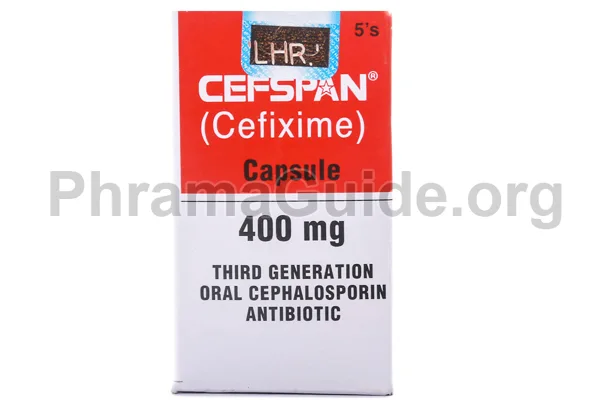Cefspan is an antibiotic commonly used to treat various bacterial infections. Like all medications, it can have side effects, which can range from common and mild to less common and more severe.
Common Side Effects
- Gastrointestinal Distress:
- Nausea
- Diarrhea
- Abdominal pain
- Vomiting
- Headache
- Skin Rash
- Increased Levels of Liver Enzymes:
- Elevated liver enzyme levels may occur, but this is generally reversible once the medication is discontinued.
Less Common Side Effects
- Allergic Reactions: Allergic reactions to Cefspan can include hives, itching, swelling, and, in rare cases, severe allergic reactions like anaphylaxis.
- Pseudomembranous Colitis: This is a severe and potentially life-threatening condition that can result from the overgrowth of the bacteria Clostridium difficile in the colon. It may cause severe diarrhea, abdominal pain, and fever.
- Decreased Blood Platelet Count (Thrombocytopenia)
- Liver Problems: Abnormal liver function tests Jaundice (yellowing of the skin or eyes)
- Kidney Problems: Changes in kidney function or kidney damage, though these are relatively rare.
- Blood Disorders: Cefspan can cause Anemia.
- Central Nervous System Effects: Dizziness, and Confusion (rare)

What is Cefspan?
Cefspan is one of the leading brands of Cefixime, manufactured and marketed by Barrett Hodgson Pakistan (Pvt) Ltd.
Cefspan : Available Formulations and Strengths
Presently, Cefspan is available in Capsule and Syrup Forms.
Cefspan Capsule : 400mg strength
Cefspan Syrup : 100mg/5ml strength
Cefspan DS Syrup : 200mg/5ml strengths
What Are The Possible Drug Interactions of Cefspan?
- Antacids: Antacids containing aluminum, magnesium, or calcium can reduce the absorption of Cefspan. To avoid this interaction, take antacids at least 2 hours before or after taking Cefspan.
- Probenecid: Probenecid may reduce the excretion of Cefspan, leading to increased levels of Cefixime in the body. This interaction can enhance the effectiveness of Cefspan, but it may also increase the risk of side effects.
- Warfarin: Cefspan may increase the effects of warfarin, an anticoagulant (blood thinner). This can potentially raise the risk of bleeding, so close monitoring of your blood clotting parameters is important if you are taking both medications.
- Diuretics: Some diuretics may increase the concentration of Cefspan in the blood, which can potentially lead to side effects or affect the effectiveness of the antibiotic. Your healthcare provider will monitor you if you are prescribed both diuretics and Cefspan.
- Iron supplements: Iron supplements can reduce the absorption of Cefspan. To prevent this interaction, take Cefspan at least 2 hours before or after iron supplements.
- Methotrexate: Cefspan may interfere with the elimination of methotrexate from the body, potentially leading to increased methotrexate levels and the risk of toxic effects. Your healthcare provider will closely monitor you if you are taking both medications.
- Other antibiotics: Cefspan should be used with caution alongside other antibiotics, especially those with similar mechanisms of action, as it can increase the risk of side effects and reduce effectiveness.
- Oral contraceptives: Cefspan may reduce the effectiveness of oral contraceptives, potentially increasing the risk of unintended pregnancies. It’s advisable to use alternative or additional methods of contraception while taking Cefspan.
- Drugs that reduce stomach acid: Medications like proton pump inhibitors (PPIs) and H2 blockers can reduce the absorption of Cefspan, potentially decreasing its effectiveness. To minimize this interaction, take Cefspan before taking medications that reduce stomach acid.
- Vaccines: Cefspan may interfere with the effectiveness of certain vaccines. Consult with your healthcare provider to determine the best timing for vaccinations if you are taking Cefspan.

Leave A Comment